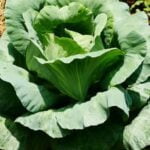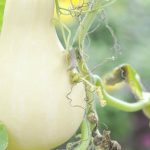Summer vegetable gardening is a rewarding and enjoyable activity that allows you to savor the flavor of freshly harvested produce right from your backyard. Whether you’re a seasoned gardener or a novice enthusiast, the summer months offer a plethora of opportunities to cultivate an abundant and thriving vegetable garden. In this article, we will delve into the world of summer vegetable gardening and explore the benefits and joys it brings.
When it comes to summer vegetable gardening, the keyword is preparation. By selecting the best vegetables suited for hot weather climates, preparing your garden with proper soil conditions, mulching strategies, and effective watering techniques – you set yourself up for a successful harvest. From planting seeds and seedlings to caring for your plants through pruning, fertilizing, pest control, and disease prevention – every step is crucial in ensuring your summer vegetable garden flourishes.
In the following sections, we will provide a comprehensive guide on how to navigate through the joys and challenges of summer vegetable gardening. From selecting the right vegetables to troubleshooting common issues, we aim to equip you with all the knowledge and inspiration needed to embark on a fulfilling journey towards cultivating your own bountiful harvest. So roll up your sleeves, grab your gardening tools, and get ready to enjoy the flavors of summer with your very own homegrown vegetables.
Selecting the Best Vegetables for Summer Gardening
When it comes to summer vegetable gardening, selecting the right vegetables to grow is crucial for a successful harvest. Some vegetables thrive in hot weather, while others may struggle to survive during the scorching summer months. Choosing the best vegetables for your summer garden can ensure that you enjoy a bountiful harvest and minimize the risk of plant stress or failure.
Vegetables That Thrive in Hot Weather
Certain vegetables are well-suited for summer gardening because they can withstand high temperatures and sun exposure. Vegetables like tomatoes, peppers, cucumbers, zucchini, okra, and eggplant are excellent choices for summer planting. These heat-tolerant crops thrive in warm climates and produce abundantly when given the right conditions such as ample sunlight and well-draining soil.
Tips for Choosing the Right Vegetables
When selecting vegetables for your summer garden, consider factors such as your local climate, available space, and personal preferences. Choose vegetables that you enjoy eating and that are suitable for your region’s growing season. Additionally, opt for varieties that have been bred specifically for hot weather conditions to increase your chances of a successful harvest.
Some nurseries and seed companies offer heat-tolerant vegetable varieties that are specifically designed for summer vegetable gardening. By selecting the best vegetables for your summer garden, you can set yourself up for a rewarding and productive growing season.
Preparing Your Garden for Summer Planting
Summer vegetable gardening is a delightful and rewarding activity that allows individuals to enjoy the freshest produce right from their backyard. Before planting your favorite summer vegetables like tomatoes, peppers, cucumbers, and zucchini, it is crucial to prepare your garden properly.
One of the essential steps in preparing your garden for summer planting is ensuring that the soil is nutrient-rich and well-draining. Test your soil pH levels and amend it with organic matter like compost to provide the necessary nutrients for healthy plant growth.
Mulching is another key technique in maintaining a successful summer vegetable garden. Mulch helps retain moisture in the soil, suppresses weeds, regulates soil temperature, and improves overall soil structure.
Organic mulches like straw, grass clippings, or shredded leaves are excellent choices for vegetable gardens as they break down over time and contribute nutrients back into the soil. Applying a layer of mulch around your plants will not only benefit their growth but also reduce the need for frequent watering during the hot summer months.
Proper watering techniques are vital for the success of your summer vegetable garden. Water deeply and infrequently to encourage deep root growth and drought tolerance in your plants.
Consider installing drip irrigation systems or soaker hoses to deliver water directly to the root zone while minimizing water waste through evaporation or runoff. Be mindful of watering early in the morning to allow foliage ample time to dry out during the day and prevent diseases like powdery mildew from developing on your plants.
| Key Points | Details |
|---|---|
| Soil Preparation | Test soil pH levels and amend with organic matter like compost. |
| Mulching | Use organic mulches like straw or grass clippings to retain moisture and suppress weeds. |
| Watering Techniques | Water deeply and infrequently, consider drip irrigation systems for efficient watering. |
Planting and Sowing Seeds
Step 1: Seed Selection and Indoor Starting
When it comes to starting your summer vegetable garden, selecting the right seeds is crucial. Begin by choosing high-quality seeds from reputable suppliers that are suited for the hot summer months. Some popular choices for summer vegetables include tomatoes, peppers, cucumbers, and zucchini.
Once you have your seeds, consider starting them indoors several weeks before the last frost date in your area. This will give your plants a head start and ensure they are ready to be transplanted into your garden once the weather warms up.
Step 2: Preparing the Soil and Planting
Before planting your summer vegetables, make sure to prepare the soil properly. Summer vegetables thrive in well-draining soil that is rich in organic matter. Add compost or aged manure to improve soil fertility and texture.
When planting seeds or seedlings, follow spacing guidelines provided on seed packets or plant tags to allow enough room for growth. Make sure to plant them in sunny locations where they can receive at least 6-8 hours of sunlight per day for optimal growth.
Step 3: Watering and Maintenance
Proper watering is essential for the success of your summer vegetable garden. During the hot summer months, plants may require more frequent watering to prevent stress and wilting. Water deeply and consistently, making sure not to overwater as it can lead to root rot.
Consider using mulch around plants to help retain moisture in the soil and reduce evaporation. Regularly check for pests and diseases, as early detection can prevent serious damage to your plants. Fertilize as needed following recommendations for specific vegetables to promote healthy growth and abundant harvests.
By following these steps and providing proper care throughout the growing season, you can enjoy a bountiful harvest of fresh summer vegetables from your own garden. Get started on your summer vegetable gardening journey today and experience the satisfaction of growing your own nutritious produce right at home.
Proper Care and Maintenance
When it comes to summer vegetable gardening, proper care and maintenance are key to ensuring a successful harvest. From pruning to pest control, each aspect plays a crucial role in keeping your garden healthy and thriving throughout the summer months. Here are some essential tips and practices to help you maintain your summer vegetable garden:
- Pruning: Regular pruning of your vegetable plants is important for promoting healthy growth and maximizing yield. Remove any dead or diseased branches to prevent the spread of diseases and improve air circulation within the plant.
- Fertilizing: Providing your summer vegetables with the right nutrients is essential for their growth and development. Consider using organic fertilizers or compost to enrich the soil and ensure that your plants receive the necessary nutrients.
- Pest Control: Dealing with pests is a common challenge in summer vegetable gardening. Keep an eye out for common garden pests like aphids, caterpillars, and beetles, and take appropriate measures such as using natural predators or insecticidal soap to control infestations.
In addition to pruning, fertilizing, and pest control, disease prevention is another important aspect of caring for your summer vegetable garden. Here are some practices you can implement to keep your plants disease-free:
- Rotate crops annually to prevent the buildup of soil-borne diseases.
- Avoid overwatering which can lead to root rot and fungal diseases.
- Inspect your plants regularly for signs of diseases such as wilting leaves, discoloration, or unusual growth patterns.
By following these tips for proper care and maintenance, you can ensure that your summer vegetable garden remains healthy, productive, and free from common issues that may arise during the growing season. Remember that proactive care is key to enjoying a bountiful harvest of fresh vegetables all summer long.
Harvesting and Storing
Harvesting fresh vegetables from your summer garden is a rewarding experience that allows you to enjoy the fruits of your labor. Knowing the right time to harvest your crops is essential for ensuring optimal taste and freshness. Here are some tips on when and how to harvest popular summer vegetables:
- Tomatoes: Harvest tomatoes when they are fully ripe and have a deep, rich color. Gently twist the fruit off the vine or use scissors to cut it to avoid damaging the plant.
- Cucumbers: Pick cucumbers when they are firm and green, but before they turn yellow or develop a bitter taste. Cut them from the vine using a sharp knife to prevent damage.
- Zucchini: Harvest zucchini when they are young and tender, around 6-8 inches in length. Use a knife to cut them from the plant, taking care not to disturb the rest of the crop.
In addition to harvesting at the right time, proper storage techniques are crucial for preserving the flavor and quality of your summer vegetables. Storing your harvest properly can help extend its shelf life and allow you to enjoy your homegrown produce for longer periods. Here are some techniques for storing and preserving your bountiful harvest:
- Refrigeration: Store vegetables like tomatoes, cucumbers, and zucchini in the refrigerator crisper drawer to maintain their freshness. Wrap them in paper towels or cloth to absorb excess moisture and prevent spoilage.
- Canning: Preserve excess vegetables through canning methods like pickling or making jams and sauces. Canned goods can be stored in a cool, dark place for an extended period, allowing you to enjoy your summer harvest throughout the year.
- Freezing: Certain vegetables can be blanched and frozen for long-term storage. Pack them in freezer-safe containers or bags, label them with dates, and store them in the freezer until ready for use.
By following these tips on harvesting and storing your summer vegetables, you can make the most of your garden’s bounty and savor fresh produce all season long. Whether you enjoy eating straight from the vine or prefer preserving nature’s goodness for later consumption, proper handling of your harvest will ensure that you get maximum enjoyment out of your efforts in summer vegetable gardening.
Troubleshooting Common Summer Gardening Issues
Summer vegetable gardening brings a wealth of benefits, from the satisfaction of growing your own food to ensuring that you have access to fresh, organic produce right in your backyard. However, as with any type of gardening, there are common challenges that gardeners may face during the summer months.
These include issues such as heat stress, watering problems, pests, and diseases that can impact the health and productivity of your vegetable garden. By understanding these challenges and knowing how to address them effectively, you can overcome obstacles and ensure a successful harvest.
One common issue faced by summer vegetable gardeners is heat stress. High temperatures can cause plants to wilt, fail to set fruit, or even die if not properly managed. To combat heat stress, it’s important to provide adequate shade for delicate plants during the hottest parts of the day.
This can be achieved by using shade cloths or planting taller crops nearby to create natural shade. Additionally, deep watering in the early morning or late evening can help keep plants hydrated and resilient against heat.
Watering problems are another challenge that gardeners often encounter during the summer months. Inconsistent watering or overwatering can lead to issues such as blossom end rot in tomatoes or split fruits in cucumbers. To prevent these problems, it’s crucial to establish a regular watering schedule based on your climate and soil conditions.
Mulching around plants can also help retain moisture in the soil and reduce water evaporation. By maintaining proper irrigation practices, you can avoid water-related issues and promote healthy growth in your summer vegetable garden.
Pests and diseases are constant threats to any garden, but they become especially prevalent during the warmer months. Common pests like aphids, caterpillars, and beetles can damage crops if left unchecked, while diseases such as powdery mildew or blight can quickly spread among plants.
Integrated pest management techniques like handpicking pests off plants, using insecticidal soap or neem oil sprays, and rotating crops each season can help minimize pest infestations. Proper sanitation practices like removing diseased plant material promptly and avoiding overhead watering can also reduce the risk of disease outbreaks in your summer vegetable garden.
| Common Summer Gardening Issues | Solutions |
|---|---|
| Heat Stress | Provide shade for plants during hot periods; water deeply in early morning or late evening |
| Watering Problems | Establish a consistent watering schedule; use mulch to retain moisture; avoid overwatering |
| Pests and Diseases | Practice integrated pest management techniques; maintain sanitation practices; rotate crops each season |
Success Stories and Inspiration
Summer vegetable gardening offers a multitude of benefits beyond just providing fresh produce for your kitchen. It can be a therapeutic and fulfilling activity that connects you with nature, allows you to enjoy the fruits of your labor, and promotes a healthier lifestyle. By growing your own vegetables during the summer months, you not only have access to flavorful and nutritious harvests but also reduce your carbon footprint by cutting down on transportation emissions associated with store-bought produce.
Selecting the best vegetables for summer gardening is crucial to ensure a successful growing season. Some vegetables that thrive in hot weather include tomatoes, peppers, cucumbers, zucchinis, and beans. Understanding the ideal conditions and requirements of each vegetable will help you make informed decisions when planning your summer garden. With proper care and maintenance techniques like pruning, fertilizing, pest control, and disease prevention, you can keep your summer vegetable garden healthy and maximize its productivity throughout the season.
To inspire readers to embark on their own summer vegetable gardening journey, success stories from experienced gardeners serve as motivation for beginners or those looking to expand their knowledge. Seeing beautiful photos of lush green gardens filled with an abundance of colorful vegetables can spark creativity and excitement about planting their own edible oasis.
And let’s not forget about the power of inspirational quotes that offer words of wisdom and encouragement to overcome any challenges that may arise during the summer vegetable gardening process. So grab your shovel, pick out your favorite seeds, and get ready to experience the joys of nurturing a thriving garden this summer.
Frequently Asked Questions
What Vegetables Are Good to Grow in Summer?
Vegetables that thrive in the summer heat include tomatoes, cucumbers, zucchini, peppers, eggplant, and okra. These vegetables love the warmth and sunlight of the summer months, making them ideal choices for your garden.
When Should I Plant Summer Vegetables?
Summer vegetables should generally be planted after the last frost date in your area. This usually falls between late spring and early summer, depending on your location. It’s important to consider the specific growing requirements of each vegetable when deciding on planting times.
What Vegetables Are Heat Tolerant in the Summer?
Heat-tolerant vegetables that can withstand the high temperatures of summer include okra, sweet potatoes, black-eyed peas, cherry tomatoes, and hot peppers. These vegetables have adapted to thrive in warm conditions and are less likely to suffer from heat stress compared to other varieties.

If you’re looking to get into vegetable gardening, or are just looking for some tips on how to make your current garden better, then you’ve come to the right place! My name is Ethel and I have been gardening for years. In this blog, I’m going to share with you some of my best tips on how to create a successful vegetable garden.





